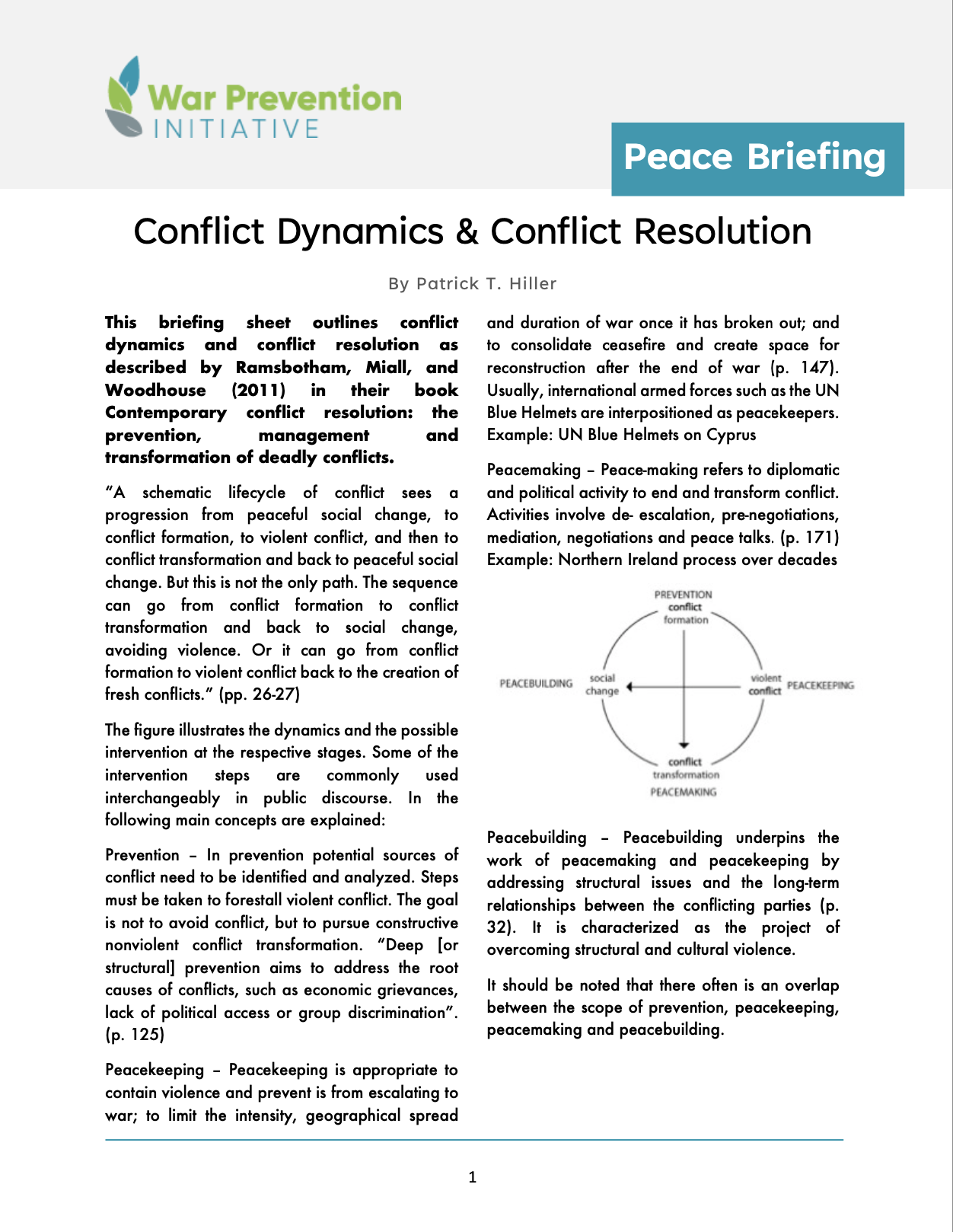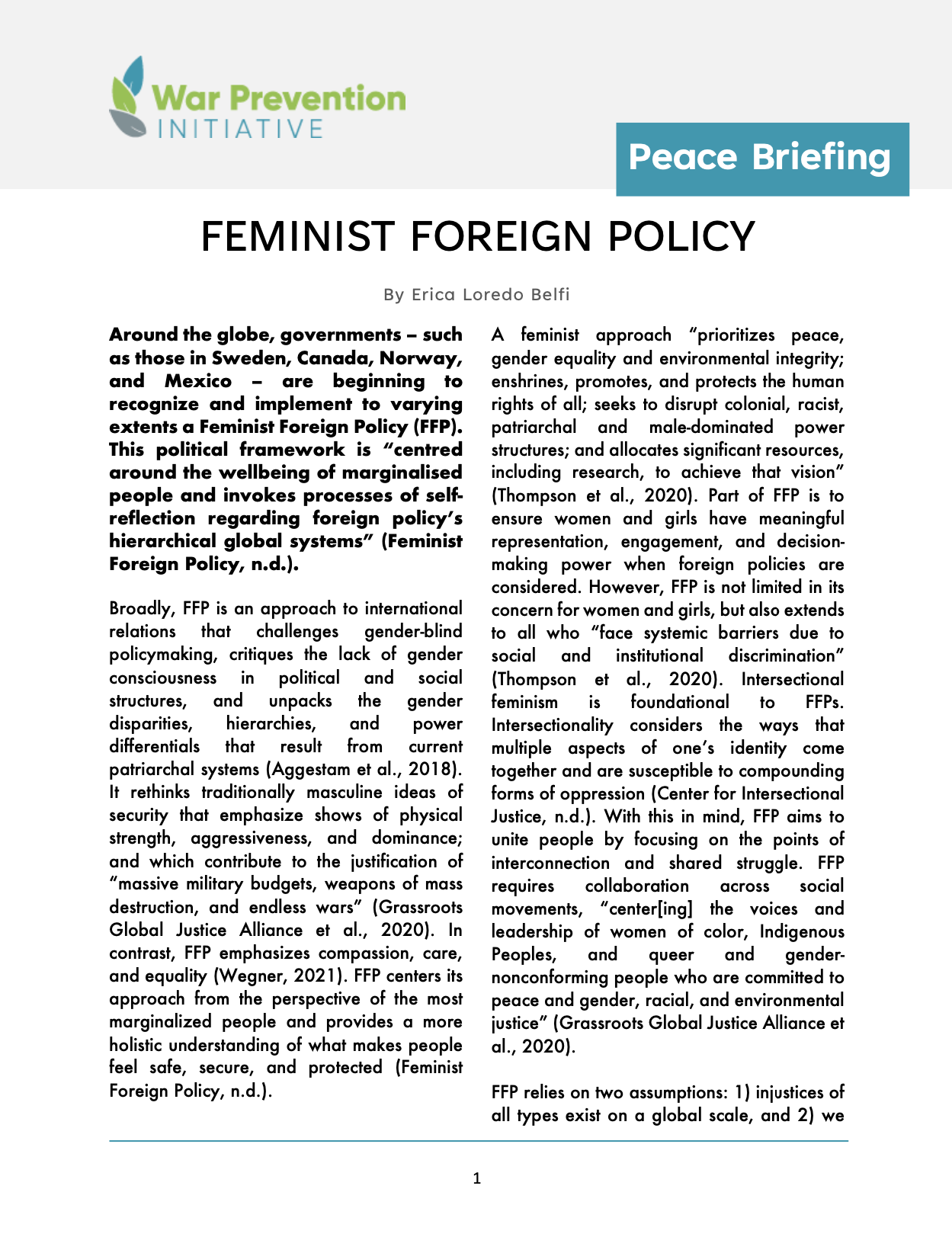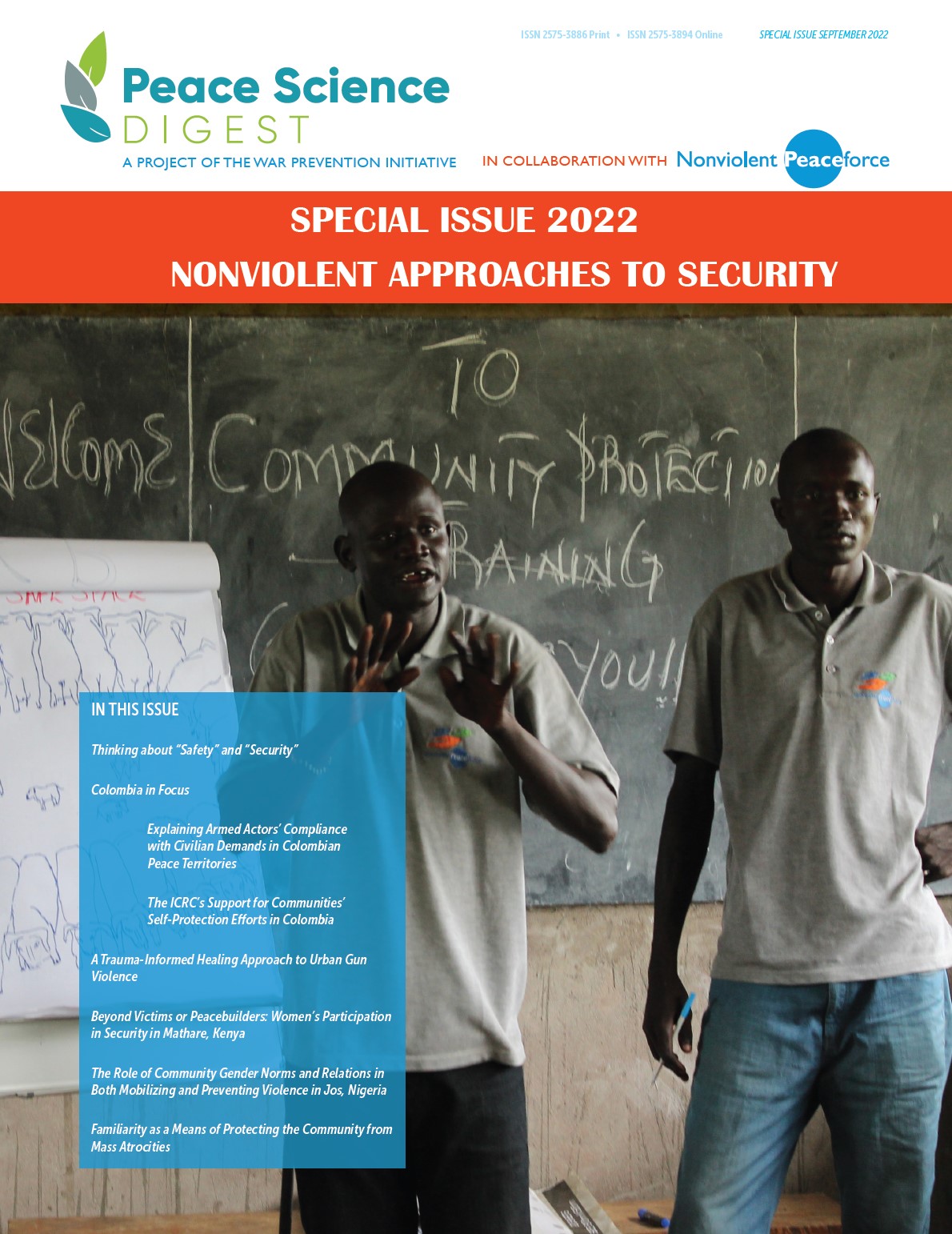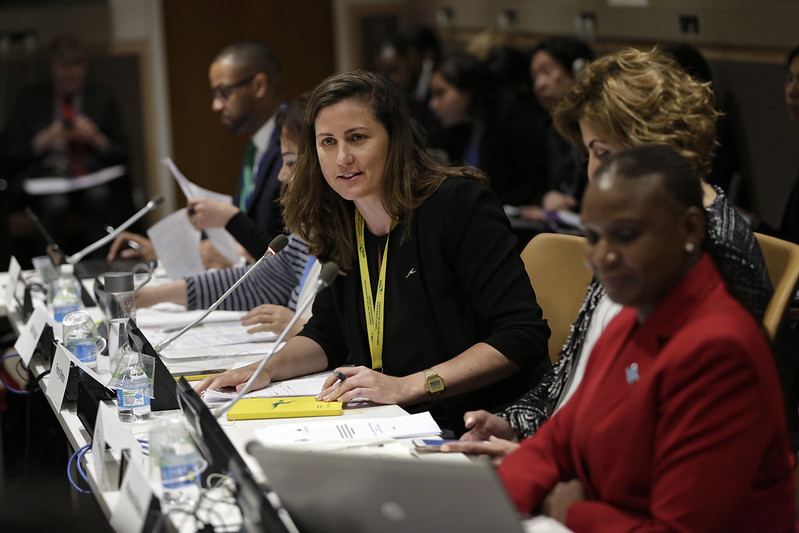
Colombia in Focus: Explaining Armed Actors’ Compliance with Civilian Demands in Colombian Peace Territories
Armed actors depend on the cooperation of civilians in order to reach their objectives and therefore cannot achieve everything they wish to through violence alone.

Peace Briefing: Conflict Dynamics & Conflict Resolution
This briefing sheet outlines conflict dynamics and conflict resolution as described by Ramsbotham, Miall, and Woodhouse (2011) in their book Contemporary conflict resolution: the prevention, management and transformation of deadly conflicts. “A schematic lifecycle of conflict sees a progression from peaceful social change, to conflict formation, to violent conflict, and then to conflict transformation and … Read more

Ensayo ‘Un-contest’ sobre una política exterior feminista
[Ya no estamos aceptando envíos. Gracias por todos los que han contribuido.] War Prevention Initiative (WPI, por sus siglas en inglés) está buscando presentaciones para un ensayo “un-contest” sobre una política exterior feminista. En War Prevention Initiative, centramos nuestro análisis en el desafío al militarismo y la suposición de que el uso de la violencia, … Read more

Peace Briefing: Feminist Foreign Policy
Around the globe, governments are beginning to recognize and implement to varying extents a Feminist Foreign Policy (FFP). This political framework is “centred around the wellbeing of marginalised people and invokes processes of self-reflection regarding foreign policy’s hierarchical global systems” (Feminist Foreign Policy, n.d.). Broadly, FFP is an approach to international relations that challenges gender-blind … Read more

Special Issue: Nonviolent Approaches to Security
Click here to download the PDF version of the Special Issue Dear Readers, We are pleased to present our special issue on nonviolent approaches to security in collaboration with Nonviolent Peaceforce. This issue focuses on nonviolent, civilian-led strategies for protection and violence prevention in various violent contexts, ranging from civil … Read more

Launch Event on Nonviolent Approaches to Security
We are happy to announce the September 29, 2022 launch event for the Special Issue collaboration of our Peace Science Digest together with Nonviolent Peaceforce What Do Safety & Security Mean to You?Nonviolent Approaches to Security: Perspectives from Communities Around the World * * * Sign up here: https://us06web.zoom.us/meeting/register/tZwuduyvrjwrHNHRpAVGMSiuepOCc67buhki Sep 29, 2022 09:00 AM in Central … Read more
A New Look for the War Prevention Initiative
To our community: After more than a decade of working toward our vision, it become clear to us that our organic organizational growth and strategic planning took place without considering our visual identity. To address this, we took steps to reimagine our outward face by creating a new website and logo. As you can see … Read more

The Role of Civil Society in Monitoring Ceasefires
Civil society ceasefire monitoring can address risks to ceasefire implementation

How A Feminist Ethic of Care Can Inform Feminist Foreign Policy
This analysis summarizes and reflects on the following research: Robinson, F. (2021). Feminist foreign policy as ethical foreign policy? A care ethics perspective. Journal of International Political Theory, 17(1), 20-37. Talking Points Key Insight for Informing Practice While a feminist ethic of care opens up space for attentiveness and responsiveness … Read more

Essay ‘Un-contest’ on a Feminist Foreign Policy
The War Prevention Initiative (WPI) is seeking submissions for an essay un-contest on a feminist foreign policy.
We want to challenge ourselves and potential contributors to ask: What does your feminist foreign policy look like?

Hero-Villain Narratives Prominent in U.S. Call-to-Arms Speeches
Narratives about national security, namely those identifying specific security threats, are highly influential in generating support for military action. In studying American call-to-arms speeches, Alexandra Homolar finds that hero-villain narratives are prominent in U.S. security discourse “from Samuel Adams to Donald Trump,” and are effectively used by political leaders because of their emotional appeal to the public.
